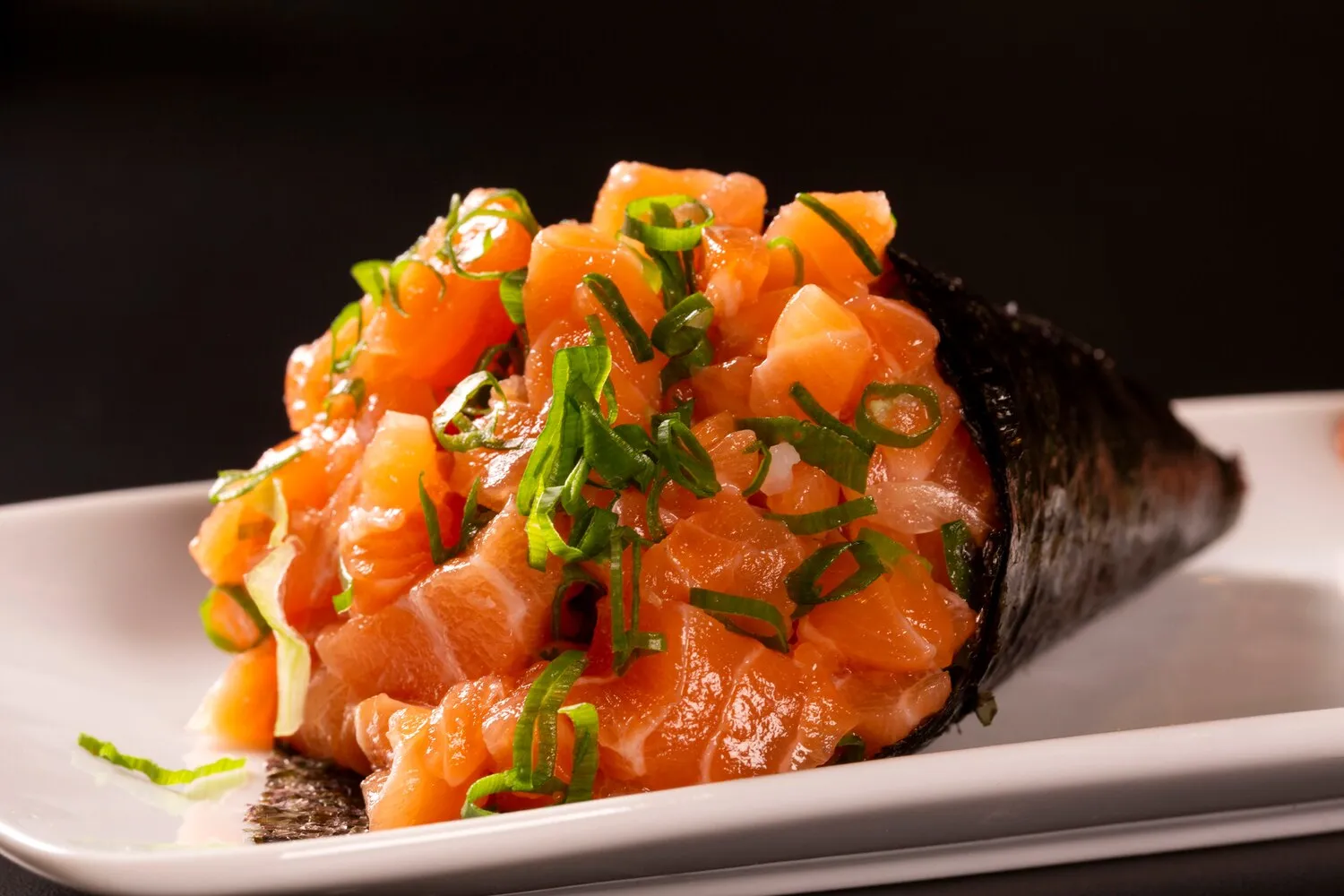
Temaki
Hand-rolled sushi cones filled with various ingredients.
Nutrition Facts
* The % Daily Value (DV) tells you how much a nutrient in a serving of food contributes to a daily diet. 2,000 calories a day is used for general nutrition advice.
Ebisu Sushi - Tijucas
Sushi, in its earliest forms, was a method of preserving fish using fermented rice. Over time, this evolved from mere preservation to a dish in its own right. Temaki, as a hand-rolled, casual form of sushi, likely emerged as a quicker, more convenient way to enjoy sushi ingredients, possibly in the latter half of the 20th century as sushi became more widely popular.
Temaki is often associated with informal gatherings and home-style meals in Japan. Its DIY nature makes it a fun and interactive dish, perfect for sharing with friends and family. The ability to customize fillings allows for individual preferences and dietary needs, contributing to its popularity as a communal dining experience.
Social Dining
Temaki parties are a popular way to socialize in Japan, where guests assemble their own rolls with a variety of ingredients.
Customization
The dish's versatility allows for endless variations, reflecting regional ingredients and personal tastes.
Informal Occasions
Unlike more formal sushi preparations, temaki is typically enjoyed in a relaxed, casual setting.
Temaki offers a delightful combination of fresh, savory, and umami flavors. The crisp nori seaweed provides a distinct marine taste, while the sushi rice offers a subtle sweetness and slight acidity. Fillings contribute a wide range of flavors, from the rich, oily taste of salmon to the clean, briny taste of tuna and the refreshing crispness of vegetables.
The primary flavor components include: Nori (seaweed): Provides a salty, umami-rich foundation. Sushi rice: Seasoned with vinegar, sugar, and salt, offering a slightly sweet and acidic counterpoint. Raw fish (e.g., salmon, tuna): Delivers a rich, fatty, and often slightly sweet flavor. Vegetables (e.g., cucumber, avocado): Contribute freshness and textural contrast. Wasabi: Adds a pungent, spicy kick. Soy sauce: Provides a salty and umami-rich dipping sauce. Ginger (gari): Serves as a palate cleanser between bites.
Freshness is Key
Always use the freshest possible ingredients, especially for raw fish. Quality ingredients will significantly impact the flavor and overall experience.
Rice Preparation
Use short-grain sushi rice and season it properly with sushi vinegar. Allow the rice to cool slightly before using it for temaki.
Rolling Technique
Hold the nori sheet in your hand, spread a thin layer of rice over one half, and arrange the fillings diagonally across the rice. Gently roll the nori into a cone shape, sealing the edge with a few grains of rice or a touch of water.
Eat Immediately
Temaki is best enjoyed immediately after rolling to prevent the nori from becoming soggy.
Explore additional Japanese dishes and restaurants
Explore JapaneseDiscover top dining spots and culinary experiences in Tijucas.
Explore TijucasLearn more about the food culture, restaurant scene, and culinary heritage of Brazil.
Explore Brazil